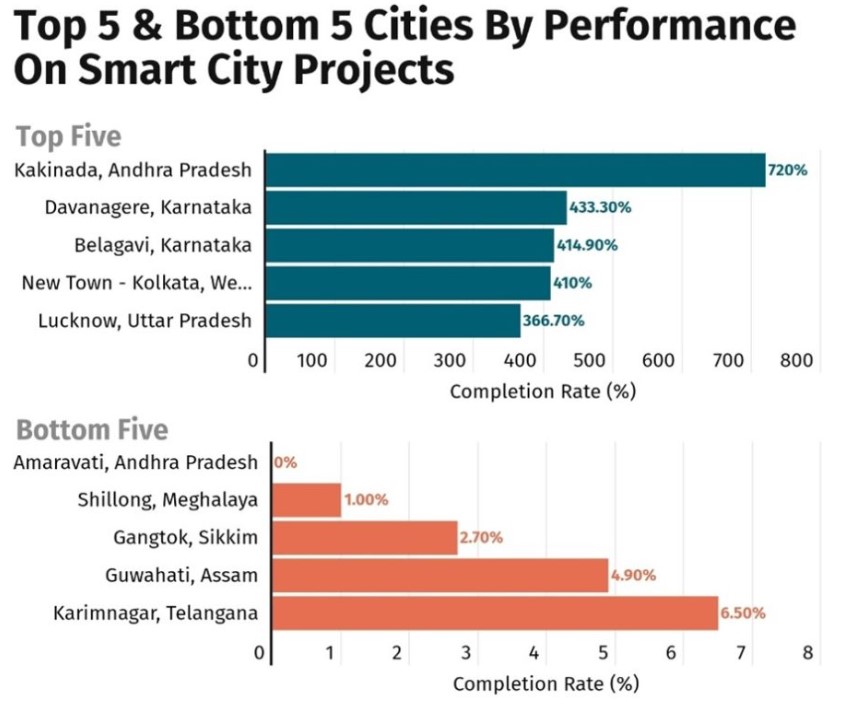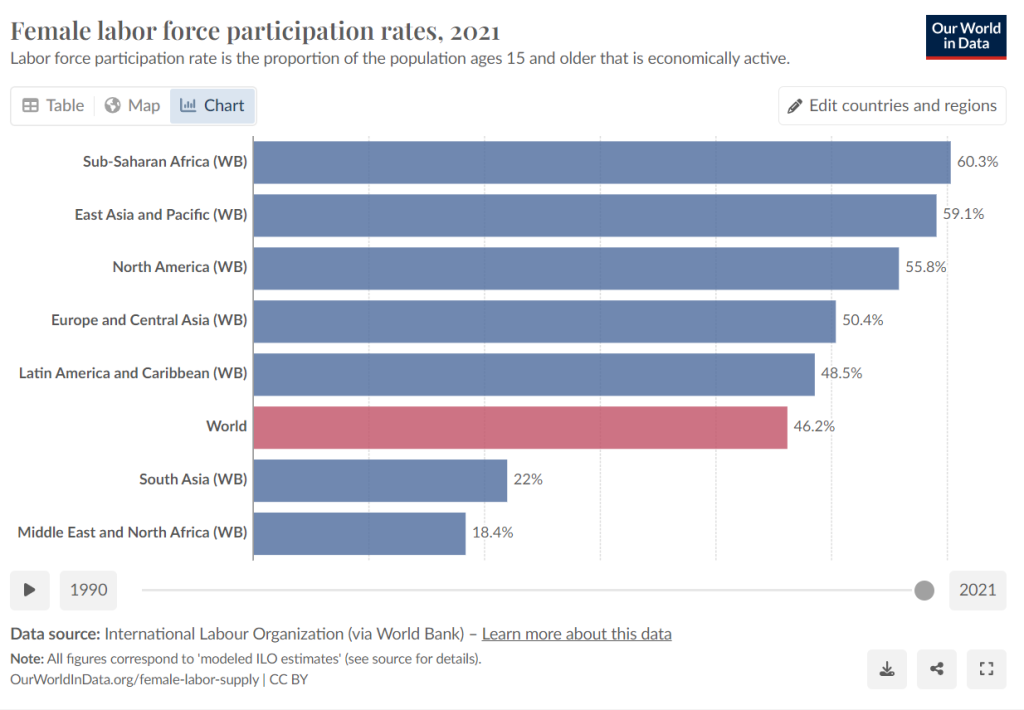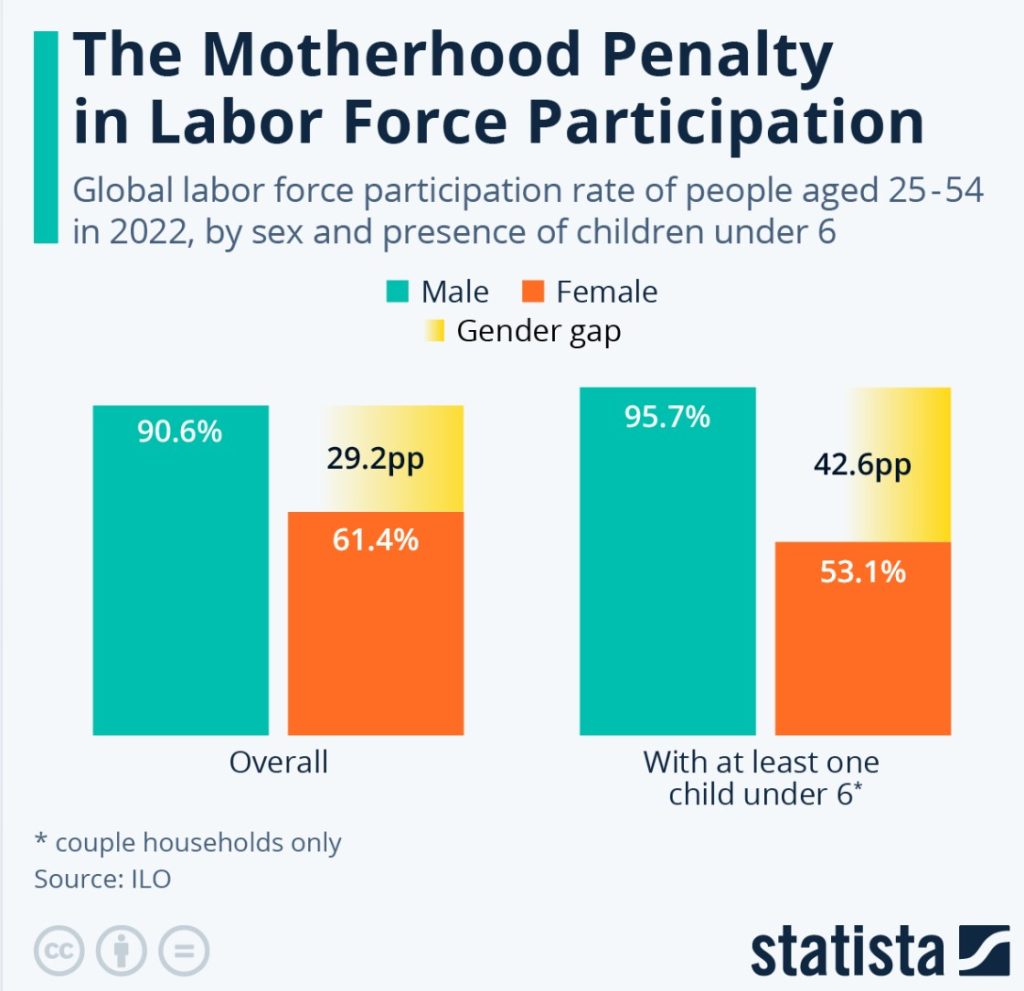CONTENTS
- An Overview of the Smart Cities Mission
- Does Work from Home Benefit Working Mothers?
An Overview of the Smart Cities Mission
Context:
The NDA-1 administration, cognizant of global trends on smart cities, aimed to adapt through the Jawaharlal Nehru National Urban Renewal Mission (JNNURM). This led to the unveiling of the Smart Cities Mission (SCM) in June 2015, targeting a hundred cities over five years. The SCM, a flagship initiative of the NDA-1 government, has however, taken a back seat in this year’s roster of electoral promises and accomplishments.
Relevance:
GS2-
- Government Policies and Interventions
- Welfare Schemes
GS3- Infrastructure
Mains Question:
In the context of the government’s flagship initiative, the Smart Cities Mission, highlight how are smart cities defined by the government. Also analyse the reasons behind the scheme being considered exclusionary. (15 Marks, 250 Words).
What Exactly Constitutes a “Smart City”?
- The concept gained traction post the 2009 financial crisis. Urban planners envisioned smart cities as modern hubs akin to Silicon Valley, characterized by seamless integration of transportation networks like airports and highways alongside cutting-edge information and communication technologies (ICT).
- However, the mission lacked a precise definition of what constituted a smart city. It acknowledged the absence of a universally accepted definition and recognized that the concept’s interpretation varied based on factors such as a city’s development level, its residents’ willingness to embrace change, available resources, and local aspirations.
- Consequently, what qualifies as a smart city in India might differ from European standards, and even within India, there’s no singular definition, allowing for diverse interpretations tailored to each city’s unique circumstances.
- The SCM encompassed two primary dimensions: area-based development, which included three elements—city renewal through redevelopment, city improvement via retrofitting, and city extension through greenfield projects; and pan-city solutions leveraging information and communication technology (ICT).
- These components spanned six categories: e-governance, waste management, water management, energy management, urban mobility, and skill development.
- Approximately ₹2 lakh crore was allocated to the mission, with public-private partnerships (PPP) serving as a key facilitator.
Performance of the Mission:

- Originally slated for completion in 2020, the mission received two extensions, stretching its deadline to June 2024.
- To enhance its efficacy, a governance model grounded in business principles was adopted, departing from existing city governance frameworks in the nation.
- This involved establishing a Special Purpose Vehicle (SPV) helmed by either a bureaucrat or a representative from a multinational corporation, alongside other major stakeholders, registered under the Companies Act. Consequently, the elected council played a diminished role in the governance structure.
- The current status of the SCM is indicated by the Urban Ministry’s dashboard as of April 26. It reveals that out of 8,033 projects sanctioned under the SCM, the total outlay has decreased from the anticipated ₹2 lakh crore to ₹1,67,875 crore, marking a 16% shortfall compared to the projected capital flow across 100 cities.
- According to the dashboard, 5,533 projects funded by SCM grants, totaling ₹65,063 crore, have reached completion, while 921 projects worth ₹21,000 crore are still in progress.
- Notably, around 400 projects being implemented by approximately 10 cities under the Mission are unlikely to meet the extended deadline of June 2024.
- An interesting observation from the funding perspective is that the PPP route has contributed no more than 5% of the total funding.
Where did the SCM Encounter Challenges?
- The initial selection of 100 cities through a competitive process was flawed due to the wide-ranging diversity in existing urban conditions.
- The scheme failed to align with the dynamic nature of urbanization in India, which contrasts with the more static urban landscapes of the West.
- The SCM evolved into an exclusive initiative, wherein no more than 1% of a city’s geographical area was designated for development.
- For instance, Chandigarh, which received ₹196 crore in the first installment under the SCM, allocated funds predominantly to smart water meters, a Wi-Fi zone, and consolidated solid waste management efforts into one specific area, Sector 43.
- However, according to two significant reports by McKinsey, achieving livable conditions in Indian cities necessitates a capital expenditure of $1.2 trillion by 2030.
- In this context, the allocated ₹1,67,875 crore amounts to less than $20 billion over nine years, representing merely 0.027% of the total requirement for urban development in India. Consequently, the scheme failed to gain significant traction.
- Moreover, the Special Purpose Vehicle (SPV) model devised for smart cities was not in harmony with the 74th Constitutional Amendment, leading to objections from many cities regarding the governance structure. Critics argued that the design was overly centralized.
- Some small towns with modest annual budgets of less than ₹100 crore were allocated projects worth over ₹2,500 crore, which did not resonate with the needs of the local residents.
- Urban India, as highlighted by the World Bank, hosts over 49% of its population in slum areas. In the pursuit of executing smart city projects, there were instances of displacing people from impoverished localities. For example, street vendors were uprooted, and the urban commons were disrupted.
- Furthermore, a significant consequence of the SCM has been an exacerbation of urban flooding. Some towns, historically immune to flooding, became vulnerable due to infrastructure development projects that interfered with or dismantled water channels and contours.
Conclusion:
Certainly, there are numerous easily accessible opportunities along the path to becoming “smart,” and an agile policy strategy can swiftly capitalize on these. Prioritizing pollution-free public spaces, pedestrian-friendly infrastructure, and seamless mobility, supported by dependable civic amenities, represents the intelligent direction forward. As urbanization takes center stage in global policy discussions, emphasizing local governance becomes increasingly imperative.
Does Work from Home Benefit Working Mothers?
Context:
In their October 2023 University of Virginia working paper titled “Has the Rise of Work-from-Home Reduced the Motherhood Penalty in the Labor Market?”, Emma Harrington and Matthew E. Kahn explore the potential impact of work-from-home (WFH) arrangements on the “motherhood penalty” phenomenon.
Relevance:
GS2- Role of Women
- Issues Related to Women
- Gender
GS3-
- Employment
- Issues Relating to Development
Mains Question:
With reference to the changing nature of work across its various aspects, discuss how can Work from Home opportunities for women enhance their labour force participation. What are the associated challenges and solutions in this regard? (15 Marks, 250 Words).
Female Labor Force Participation:
- As per the World Bank, the global labor force participation rate among women stands slightly above 50%, whereas it reaches 80% for men.
- Women are less inclined to engage in formal employment and encounter fewer prospects for expanding businesses or advancing in their careers.

Motherhood Penalty:
- This penalty refers to the tendency for a significant number of working women to leave the workforce after becoming pregnant, prioritizing family responsibilities.
- Historically, the motherhood penalty has contributed to women’s lower labor force participation rates across many countries.
- It is particularly pronounced in professions like finance, known for their rigid and less family-friendly work environments.

More on the Study Conducted:
- Harrington and Kahn investigate whether WFH arrangements, which offer greater flexibility, could mitigate the motherhood penalty by enabling mothers to effectively balance work and family commitments.
- The researchers examined the impact of work-from-home (WFH) setups over the decade preceding the pandemic on the workforce participation of mothers across various fields.
- Their findings revealed that in sectors like finance and marketing, which historically lack family-friendly policies but where remote work is feasible, there was a relative increase in the employment of mothers compared to other women when WFH options expanded.
- Specifically, the researchers noted that a 10% increase in WFH arrangements correlated with a 0.78 percentage point uptick in the employment of mothers in these fields compared to other women.
- Conversely, similar positive effects were not observed in fields like education and pharmacy, known for their family-friendly environments and where physical presence in the workplace is often deemed essential.
- The researchers suggest that WFH arrangements have the potential to facilitate the retention of more women, and potentially men, in the workforce by offering increased work flexibility and better work-life balance.
- During the pandemic, work-from-home (WFH) arrangements became widely adopted as employers faced challenges in compelling their employees to come into the office due to lockdowns.
- Importantly, WFH also allowed many employers to realize cost savings on rent and other expenses associated with traditional office spaces, thereby bolstering their financial performance.
- The concept of co-working spaces gained popularity as businesses recognized the potential to pay for space based on actual usage rather than investing in large office premises.
Conclusion:
However, since the pandemic’s conclusion, many employers have increasingly encouraged their employees to return to the office. Some researchers speculate that corporate executives’ push for a return to the office may not necessarily be aimed at enhancing worker productivity but rather at asserting control over their workforce.




